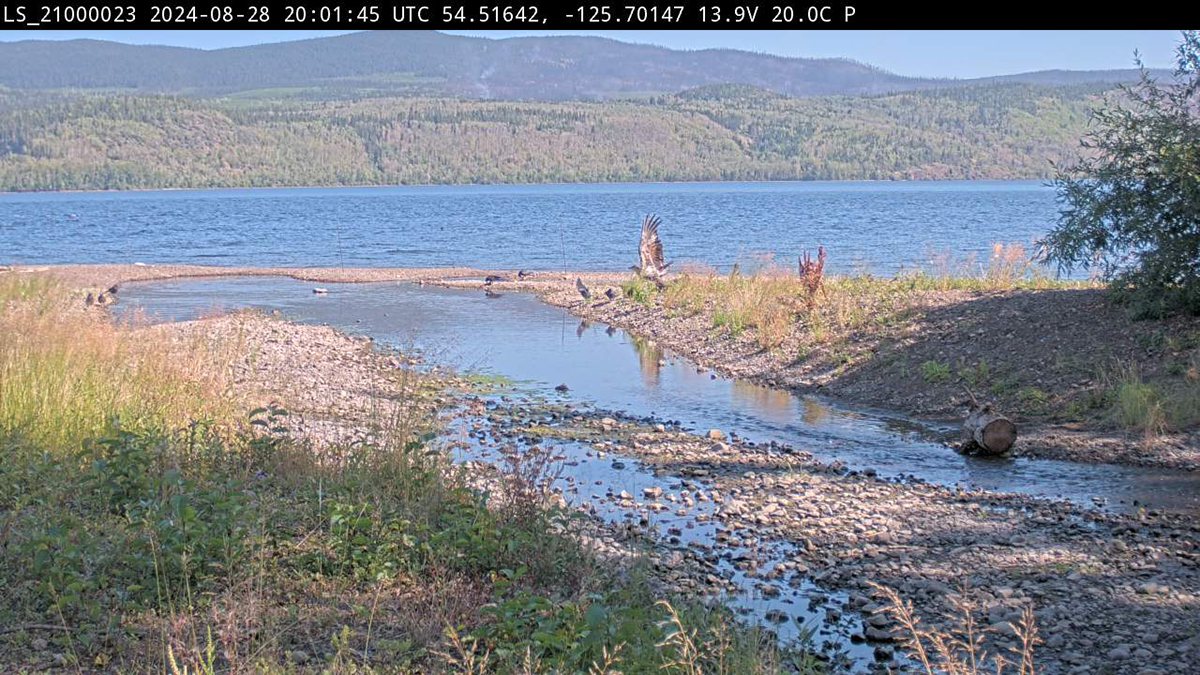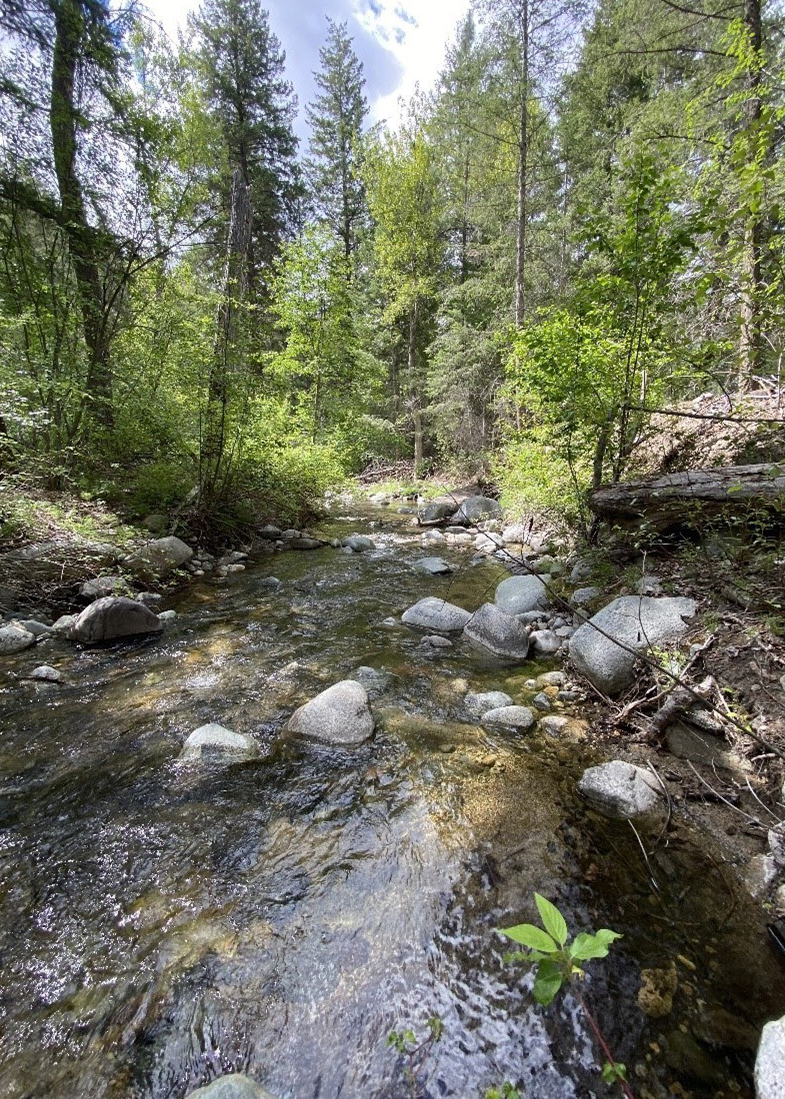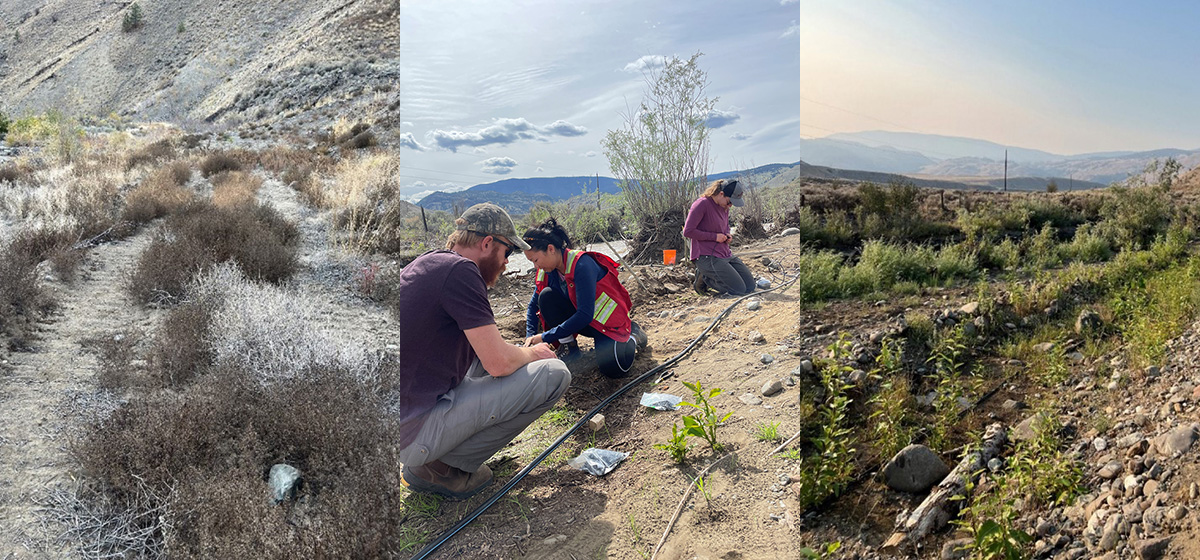Restoring salmon habitat promotes the long-term health of Pacific salmon populations
Research and monitoring have shown that Pacific salmon respond well to habitat restoration with improved survival and reproduction rates in restored areas. We are actively supporting the restoration of fish habitat by working with partners to repair or rehabilitate salmon habitat in local streams and watersheds through the Pacific Salmon Strategic Initiative (PSSI).
Through the Habitat Restoration Program under PSSI, we are actively supporting Pacific salmon conservation and recovery by building partnerships, carrying out restoration projects in key areas, monitoring restoration activities, and researching new restoration approaches. The Restoration team is made up of biologists, engineers, technicians, and community advisors who work collaboratively with Indigenous communities, community stewardship groups, non-government organizations, and government agencies to restore fish habitat.
Working with others to restore salmon habitat and support resilient ecosystems is vital to helping Pacific salmon thrive and reversing their decline. Our Restoration team works closely with partners throughout the many stages of a restoration project, from planning and design to completion. We also support restoration projects with grants and contribution programs like the British Columbia Salmon Restoration and Innovation Fund and Aquatic Ecosystems Restoration Fund. Since 2021, together with our partners, we have restored over 18.5 million square metres of salmon habitat through PSSI.
Restoration projects not only benefit local ecosystems, but they also support local economies by creating jobs. They provide direct employment for people working to restore and monitor damaged habitats, and they also create indirect jobs in industries that supply materials or services for these restoration activities, like nurseries and professional services companies.
Improving salmon habitat and drought resilience in the North Coast of British Columbia

Image captured by a remote camera monitoring system to track when sockeye salmon-bearing streams are cut off from Babine Lake.
This summer and fall, our Restoration team in the North Coast of British Columbia has been working with partners to improve Pacific salmon habitat in different watersheds. In the Lakelse watershed, we partnered with Kitsumkalum First Nation and the Lakelse Watershed Society to improve the sockeye salmon spawning habitat in Scully Creek. As a result of the habitat restoration work completed, many sockeye salmon were observed spawning in the new gravel bed. In the Kispiox watershed, we worked with the Gitksan Watershed Authorities, BC Wildlife Federation, and Silver Creek Wildlife to install a structure that mimics a natural beaver dam in a drought-affected area. This structure helps store water and raises the water level of an upstream beaver dam to improve the passage of salmon. We also added a modular fish passage structure and other features to help adult salmon move through the area while maintaining water storage in the area.
In the Babine tributaries, in partnership with the Lake Babine Nation we tested innovative ways to monitor drought. Using satellite imagery and remote cameras, we tracked when sockeye spawning streams were cut off from Babine Lake. This improved Lake Babine Nation’s awareness of drought situations without the need for long trips to remote areas, making drought response for sockeye salmon more efficient.
Restoring fish passage for Chinook and coho salmon in Skuhun Creek

Chinook, coho and steelhead can now access the upstream habitat in Skuhun Creek using the newly restored fish passage.
Our Restoration team collaborated with Scw’exmx Tribal Council, Shackan Indian Band, the Province of British Columbia and the Pacific Salmon Foundation to restore fish passage for Chinook and coho salmon as well as steelhead into Skuhun Creek, one of the most pristine tributaries of the Nicola River. This major project received support from the British Columbia Salmon Restoration and Innovation Fund (BCSRIF), the Aquatic Ecosystem Restoration Fund (AERF) and the Pacific Salmon Strategy Initiative, and was completed in spring of 2024 in time for the Pacific salmon and steelhead runs.
Skuhun Creek had been cut off at the mouth of the creek from an extreme flooding event in 2021, leaving a drop into the Nicola River that was not passable for fish. After the project was completed, the 2024 Pacific salmon and steelhead runs were once again able to access the 10km of cool clean habitat within the Skuhun watershed. Work continues to restore the riparian areas of Skuhun Creek, and crews have been adding planting materials and monitoring watering systems so that the cottonwoods, willows and various native plants are able to survive on their own.
Watch the restoring salmon habitat video to learn more about this project
Using innovative methods to restore black cottonwood streamside habitat in the Thompson Nicola area
Our Restoration team in the BC interior helped restore streamside habitats along the Deadman River, a tributary of the Thompson River. This project was a group effort led by Skeetchestn Natural Resources and funded by the Pacific Salmon Foundation. Black cottonwood trees growing near streams provide important shade to creeks during the hot summer months. These areas along the edges of rivers and streams where black cottonwood trees grow, known as riparian zones, are crucial for fish productivity and wildlife. However, restoring riparian forests in the dry climate of the BC interior has been difficult, especially when the land has been damaged by development, floods, or wildfires. This year, the project successfully set up a solar-powered watering system for cottonwood cuttings, which resulted in a higher survival rate for the cottonwood trees. Once the black cottonwood trees have been established, the restored streamside habitat will benefit salmon populations for years to come.

Deadman River riparian site before, during, and after a project to restore streamside habitat with black cottonwood trees.
Related links
- Date modified: